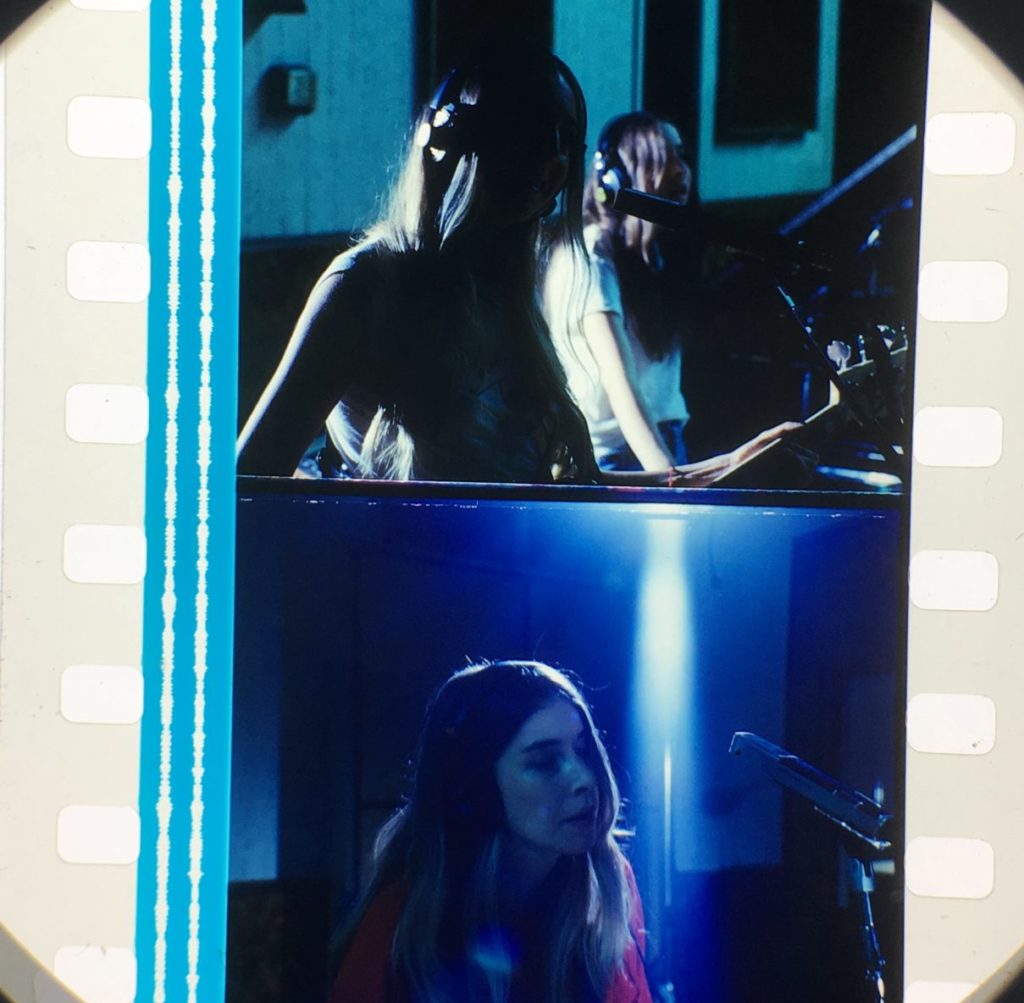
Printed through splice on original camera negative
visible on frame line. This is masked by the aperture
plate in the projector.
If you’re the kind of person who stays until the end of the credits in movies, you’re probably familiar with Mo Henry, who has worked as a negative cutter on hundreds of feature films from the early 90s onwards. Henry often manages a team of several cutters depending on the size of each film, and is responsible for assembling the irreplaceable original camera negative to match the final cut of the film. We were thrilled to talk to her over the phone earlier this year about how this largely invisible job works, and how it has changed over the past decade.
JA: How did you get started in this profession?
MH: Well I’m a fourth generation negative cutter. It’s all nepotism. My family immigrated from Ireland and my aunt was the oldest of several kids, she’s about 20 years older than my dad. When they moved to Hollywood she just walked up and down Sunset Boulevard looking into different businesses and asking for applications. She got a job in the early 1920s Fox studios which would up being Deluxe labs here in Hollywood. She became a negative cutter, and then she gave my dad and his brothers jobs, and then my dad gave my older cousins jobs, and then finally my dad trained me. So that’s how I got in.
JA: What does a negative cutter actually do, and how has the job changed over the past few decades? I’m especially curious about that period in the early 2000s where digital intermediates (DIs) really started taking over, and how quickly that change affected all of your work.
MH: A negative cutter takes the original camera negative and matches it to a source from editorial, which in the old days would have been a work print from dailies. We find the rolls of [camera negative] that match the work print and compare the key numbers which are on the edge of the film on both the work print and negative. We check the first two or three key numbers in each shot to make sure we’re in the right place, and we also do a visual check. We cut them, splice them, and that becomes a reel.
That scenario I just gave you using a work print was the very beginning, that started in the late 1800s and it didn’t change much until the ’90s. That’s a long time!
The first change that happened for me was when Avid came out. Avid is a computer program that uses the information from a telecine and captures the images and the key numbers. In the old days, we would have to take down the head and tail key numbers of every shot in the work print. We would write it down in the log, then we’d also take down the Acmade (printed edge code) numbers that were applied by editorial and write that down. Then we get a handwritten copy of the editor’s codebook and we’d have to do something called “decoding”. Decoding meant that you find the Acmade number, then you’d go to the codebook and it would tell you what lab roll, scene, and take it was of each shot, and then we’d start looking for our negative.
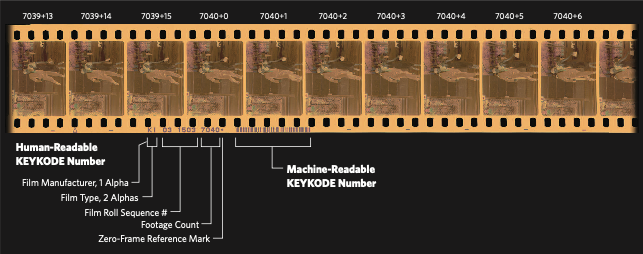
When Avid came out, it saved us a lot of work because the Avid list came with not only the key numbers but it also came with the lab roll, camera roll, scene, and take. So we were able to finally skip the hand logging part. In the ’90s we would still cut negative to the work print, but we’d have [the Avid] list. In the mid-’90s, low budget films were realizing that with the Avid telecine information you could cut negative without a work print. You could just use a list. I would never do that because telecine back then was so frequently wrong.
Then someone came up with a machine called Lokbox, and what that was was this big tape deck that was attached to a synchronizer and a video monitor. We would find the negative based on the Avid list, we’d pop it into the synchronizer, and then as we moved the synchronizer back and forth the Lokbox image would also move exactly along frame by frame.
JA: That’s pretty cool!
MH: [laughing] Yeah and the tape had a burn-in at the bottom of the image of the key numbers. So we would match the key numbers against the list and the image. But then we also had to make sure the telecine wasn’t off, so we’d have to find a frame in the negative that was exactly like the frame in the monitor. For instance, if someone opens their mouth at a certain point you’d find the frame where the mouth was just about to open.
After that, we had something called DigiConform, which was created by two guys in Munich who worked for Arri. With DigiConform we’d still get a tape but it would be ingested into a PC and digitized. We’d still use the wired synchronizer but then we’d watch a monitor and didn’t have to deal with the Lokbox which had a lot of bugs in it.
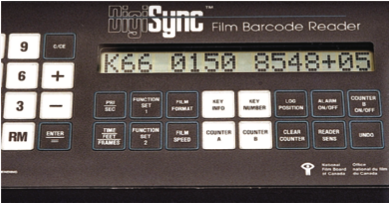
That takes us to about 2004. All of that said, the major studios (my clients were Warner Bros. and Sony) were still giving us workprint. Only low budget stuff and TV was dealing with DigiConform and Lokbox. But around 2002 or 2003 our very first digital intermediate came along and that was a film called Panic Room. It was really complicated because no one had created a workflow yet, and at the very beginning we would pull shots just like we would if we were cutting negative. We could fine-cut the negative and pull out the shot from slate to slate and then we’d build those rolls and send them to the DI facility for scanning.
That happened early 2000s, and kept going until about 2010. At that point scanning had become much cheaper and they didn’t really need us to build the rolls. We could send an entire lab roll to them and they would figure out the scanning. And then it finally went away completely: no one was making prints, and the Digital Intermediates were really automated.
I had this technology, yet another system called Film Fusion that enables you to roll the key numbers through a synchronizer with a little diode barcode reader on it. We’d run those rolls through that system, enter metadata, and after the DI was done and the film was released, we would create an archive of exactly the shots that were used in the film, in order, as much as possible by event and by reel. And that’s what we do now for the most part, archiving after the fact.
JA: You’re still cutting the camera negative for that, and not necessarily including things like effects shots, so the archival cut negative will just be a reference?
MH: That’s right. For instance, we can archive a film and pull out all the shots we need for a six reel, 90 minute film, and it may turn out to be 200 boxes all together. We got a film just this week from Warner Bros. and it had over a million feet of film. So instead of storing all of those boxes of negatives and having to keep them in the local vault, we could whittle that down to maybe two or three boxes. And the stuff that wasn’t used goes to cold storage. You know, the salt mines.
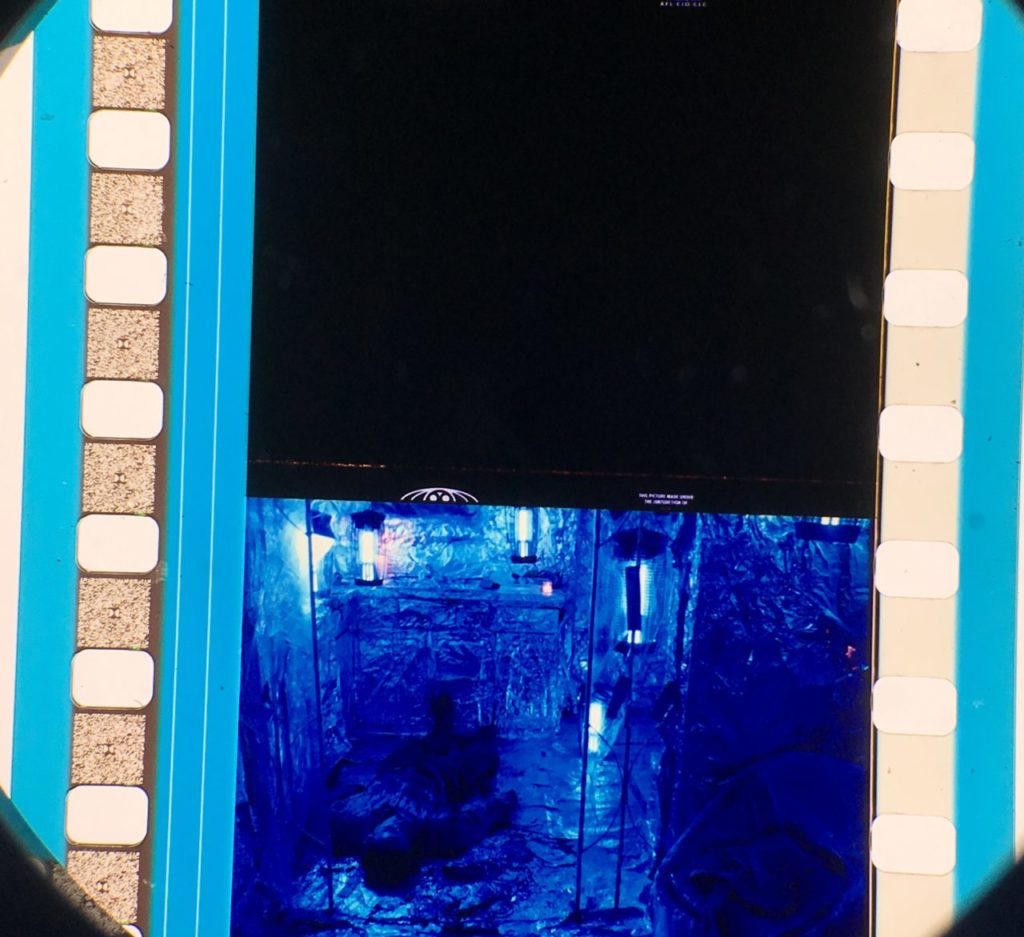
JA: What have been some of your most rewarding projects, and most frustrating projects?
MH: Well by far the most rewarding project was Harry Potter. Because I got to move to London and work there which was fantastic! It was so exciting because as you know those books were so beloved and it just felt great to be part of it. I cut negative on the first two, and then they also went to DI.
The next would be The Big Lebowski, which was just fun from the very beginning and still one of my favorite movies of all time. I didn’t know it was the Coen Brothers; the film just arrived at the lab for me. I didn’t know that they edit their own films, and my procedure when I’d get a film in would be to get the number of editorial from the studio and call and introduce myself. I did that on The Big Lebowski and this girl answered the phone and I said, “Hi I’m Mo, I’m the negative cutter I was just hoping you could give me the names of the editor and the assistant editor.” There was this kind of dead silence and she said “um…let me check.” So I hear this muffled conversation going in the background and she comes back and says “well the editor’s name is…” and I’m making this up but it was something like, Linus Limpleburger or something crazy. I was like “How do you spell that?” and she goes “um..let me check.” So they kept me going for about 15 minutes before they finally came on the line, the Coen Brothers, and told me that they edited the film themselves. It started out with a laugh from the beginning.
The Matrix was super exciting. No one had seen anything like it ever before and it was virtually all visual effects. The Matrix was one of the most rewarding and also one of the most difficult films I’ve worked on because visual effects are the very last thing to be filmed-out. They are always at the very last minute. And that was hundreds of shots that we had to put together at the very end.
Chris Nolan’s projects are always fantastic because of the editorial crews. It’s a pleasure because there’s never any stress, at least not that we were shown. It’s always calm and quiet. I’m sure they were all going crazy in editorial!
I was asked by Francis Coppola to re-cut Apocalypse Now and that version became Apocalypse Now: Redux. That was terrifying. I was dealing with the head of post-production and the editor Walter Murch, and I wasn’t actually speaking with Francis till the end. They said they were adding 51 minutes to the film and removing some shots, and I said we’ll have to turn everything in for interpositives which allow us to create a second-generation negative, so the original film stays intact. And they said no, we’re just going to chop up the original.
JA: Oh God!
MH: I know. I was just in shock. We went back and forth, back then I guess it was faxes, and I kept saying “Who owns the negatives? Does Francis actually own it? Or does Paramount own it?” And they’d say, “Just cut it.” And I said “No. If you don’t own the film I’m not going to cut it up without the studio’s release.”

That went back and forth for a couple weeks and finally everyone convinced me that I was just going to chop up the original film which was heresy to me! When everyone heard that I was finally doing it, I had all these people standing around in my room watching me make the first cut into the original film. And it turned out great and from there I was invited to the Cannes Film Festival when it was showing.
And the most frustrating? There’s a film called Tombstone that we were working on in 1994. The process and the people with whom I worked were not frustrating but the ’94 Northridge earthquake hit and none of our film racks were bolted to the ground. Imagine an entire film’s worth of rolls of negative. 52 pick-up. They were just launched all over our cutting rooms and cutting areas. And some of the sprinklers had come on during the earthquake, so we were going through all this negative trying to find where it belonged, and had to roll through everything to make sure there was no water damage. That was awful. In the meantime, there were aftershocks and my home had been red tagged.
And the other most frustrating, let’s call it challenging, was a film called Outbreak. A Warner Bros. film with Dustin Hoffman. Again, it wasn’t the fact that the people were difficult to deal with. It still occurs, I believe. [The] studios deal with each other about “OK, who’s going to open on Memorial Day?”, “Who’s gonna open in July?” And they trade around so that everybody gets a fair shot at least a couple days before the other people start releasing. I remember it was in October and some other big film was scheduled for this particular weekend and then they pulled out because they were having issues with the film. Warner Bros. jumped at that weekend and said, “OK, we want to open then with Outbreak.” I was brought into Warner Bros. and the head of post-production said “Alright we’re scrambling to get the film finished and you have 24 hours to cut the entire film.”
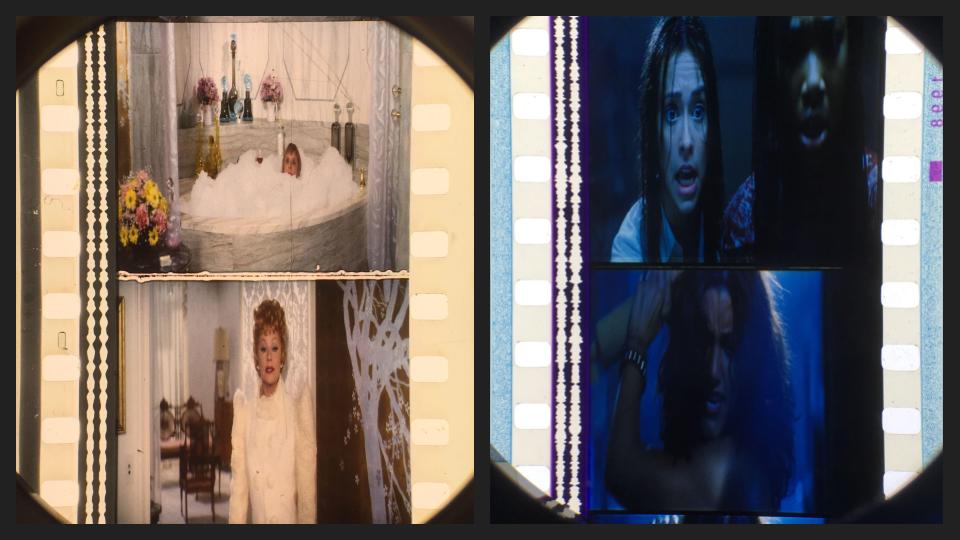
JA: Oh my god.
MH: Yeah. So I pulled in crews, I borrowed negative cutters from other cutting businesses. We were at Universal Studios at the time, Technicolor was there, and I wound up renting a bunch of hotel rooms at the Sheraton Universal, having to negotiate with the union saying, “Look, I don’t know how to tell you how much they’re working because they’ll show up at 6 in the morning, they’ll go to their hotel room, take a nap, they’ll come back, and we’re just working 24 hours a day.” So there’s that. We didn’t make the deadline but we did get it done in 30 hours and that was just exhausting.
JA: You talked about this a little bit, but at what point in film production does your work start? Are you working alongside the editor the whole time, or are they editing separately and then you get everything in a mad rush?
MH: Again, let’s go back to when there were a lot of films being cut on negative. In the old days the negative would either arrive in dailies, or when they finished shooting they would dump the whole thing on us. I would usually have lunch with the editor and the assistant and talk about scheduling and all that stuff. On the big directors’ films that are still happening like a Chris Nolan or Paul Thomas Anderson — we did his film Phantom Thread a while back — then we’re brought in at the very beginning to look at schedules. Because I’ll have to expand my crew to bring in enough people to deal with it. I’m basically brought in at the beginning nowadays. And we’ve almost always worked with the first assistant editor rather than the editor who’s locked in a room with the director.
JA: How closely are you working with the lab?
MH: Very closely, we’re pretty much a team. We’re in on all the schedule meetings together. They are the ones who move the negative to us, as we cut reels. When we cut negative we actually tape the negative together, we don’t splice it in house. The laboratories prefer to do it themselves so that if something happens. For instance, if I didn’t have a hot splicer that was maintained daily or weekly and I turned in a spliced reel, it could fall apart and the lab would be responsible. So the lab splices all our reels. We’re talking each day, and historically I was always inside the lab as well. Nowadays I’m not, but it used to be constant.
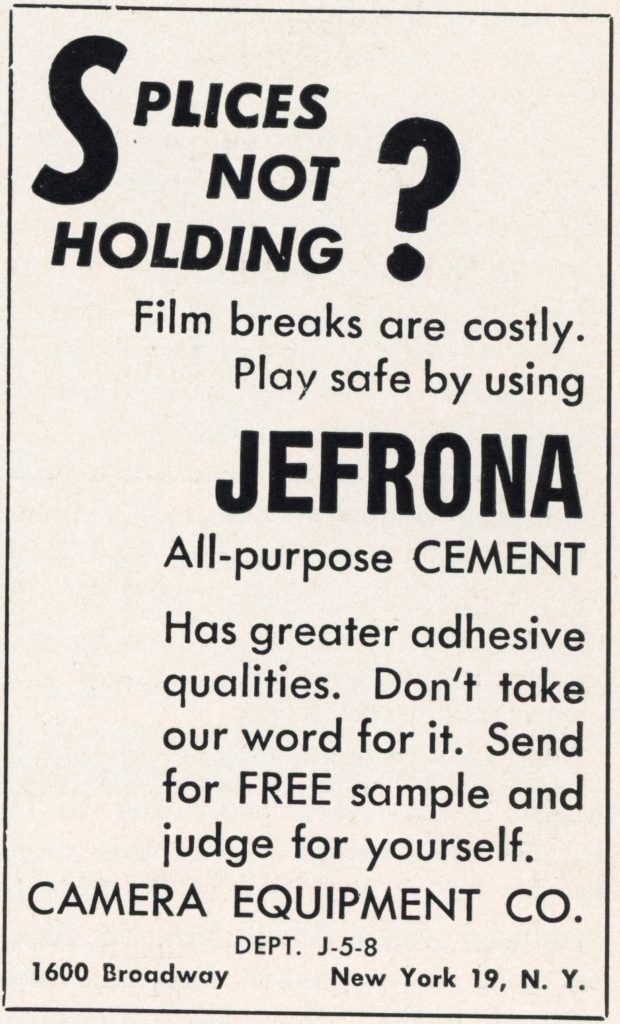
JA: As a projectionist when you screw up, your movie is out of focus or scratched, or worse. What mistakes can be made in negative cutting to affect how the movie ends up looking on screen?
MH: [laughing] Well, people sometimes think I have a creative job and it’s absolutely not creative at all. I’m just a technician. The only time I’m creative is when we make a miscut and that’s when editorial has to re-edit that section of a reel. It’s very unpleasant and almost never happens. But we can scratch film just as well as the projectionist can.
The “miscut” is the most dreaded word in negative cutting. When someone isn’t paying attention–and this is why I refuse to cut by list, because it was just too fraught with mistakes–and they cut in a shot that’s, say, a 100 feet off from what the work print or list requires. We lose frames when we have to try and piece it back together properly and then you’ll see those visually when projected. That’s kind of the worst.
JA: Well I don’t recall seeing any on any of your films.
MH: Thank you very much. You know, I gave people two miscuts per career, that was it. If you made more than two, you were gone.
JA: I like that policy.
MH: I was sort of a Nazi about it. I think the worst thing that ever happened wasn’t really a mistake, but there was a competing negative cutting company, and we were all on the same long hallway at Technicolor. And someone sabotaged us. They were walking down the hall and saw that one of our cutting rooms was open. The cutter had probably gone to the restroom or something, and stole a bunch of the film.
JA: Horrible.
MH: Yeah that was horrible. Horrible, horrible. It was never returned. Imagine me having to call production about that.
JA: I assume they’re out of business now.
MH: Well, I know who it was. So yes they are. [laughing] But I never busted them, I didn’t say anything because I couldn’t prove it. But I knew who it was. It was awful.
JA: Are there any younger people being trained to do this type of work? Who’s the youngest person on your staff?
MH: Well, again, we only cut one or two films a year. Traditional negative cut. And that’s when I expand. Most of my really senior cutters have gone on to work somewhere else, but they always come back when I need them. And they’re probably in their 40s now. I’m not aware of any negative cutting companies still in LA besides my own. So I kind of doubt there are many youngsters learning in LA, if any.
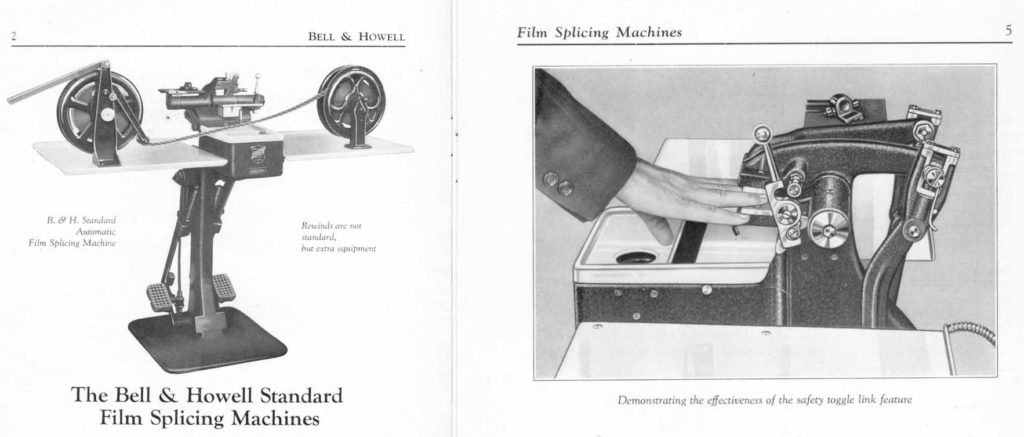
I hired my son several years ago. He’s 31 and he moved up from being a PA to being a prep person, but he does not want to cut. He doesn’t want the responsibility or stress. He’s the youngest I know of. Although I’m sure there are places, I know the Academy, for instance, have younger people come in as archivists.
JA: It seems like a lot of younger people are being trained as archivists, but the focus isn’t necessarily on technical work.
MH: Right. There are a lot of companies that do restoration where younger people will be hired and taught how to splice or repair tears. But I don’t think many people are training anymore to be negative cutters.
JA: Is your client base still mostly Hollywood productions? There are a lot of artists still working in 16mm that need this work done, do you deal with any of that? Or any other clients outside of Hollywood?
MH: Well, my two clients, 90% being archiving, are Warner Bros. and Sony. So I still cut their films. There are specific directors who are still cut negative on 35mm, or 65 mm negative, which becomes 70mm prints. And then I sometimes get really small projects where people come in with an old film. We’re doing something currently that was cut in the ’90s and never finished. Things like that.
I have a newer client who is a really well-known artist in England, Tacita Dean, who was actually sent to me by Chris Nolan. They are on a committee together to save film.
JA: I have her book!
MH: You do! Oh excellent. Tacita and I have become friends as well. And she’s still shooting on 16mm, it’s just one of the types of mediums that she uses. She also still paints, draws, does a lot of different things.
I cut three films for her last year. They’re small. And they’re actually meant to be projected on the wall of the museum, as if they were a portrait. It was the most amazing trifecta. One was at the National Portrait Gallery, one was at the Royal Academy, and one was at the Tate Modern. She has more coming up. Her films are being kept by the Academy, so she’s really in excellent hands. She makes many copies of her small loops so that they don’t wear out.
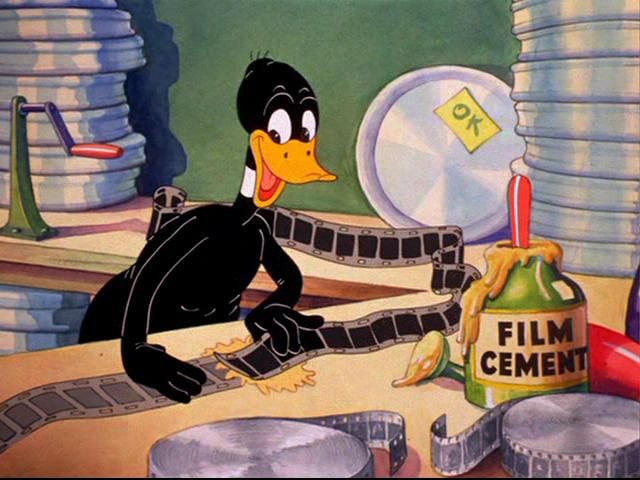
And then last year we worked on a really cool project that was a mixture of 16 and 35. It was Orson Welles’s unfinished film called The Other Side of the Wind, which was shot in the ’70s but it was never finished. They brought in a contemporary editor, who was kind of the de facto director because he was making choices on what to use. Sometimes he went off script. There are little weird things that come along that are still really fascinating.
JA: What is your favorite splicer, or some of your favorite tools?
MH: That’s funny. Well I have an absolutely gorgeous Bell and Howell 35 and 16 hot splicer, the kind that you use with foot pedals. It’s got to be seventy years old. It’s the size of a Smart Car. It still works beautifully. People come in and ask to take pictures of it because it’s so old school and it still does beautiful work. And of course our favorite tool are the scissors. And the most commonly used, a magnifying glass and gloves. That’s pretty much it.
JA: Have you seen Daffy Duck in Hollywood, where Daffy is splicing film?
MH: Not only have I seen it, but we have blow-up on one of those frames mounted above our hot splicer. If you ever look at it again the actual rewinds are put in the wrong position. It’s cute. Yeah that’s well known among cutters.
Interview transcribed by Rebecca Lyon
Further Reading:
“The Man With the Sharpest Cut“: Profile of Indian Negative Cutter Shakespear
If you enjoyed this article, please consider making a donation to the Chicago Film Society.
